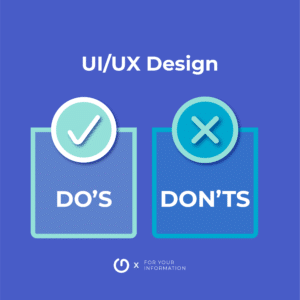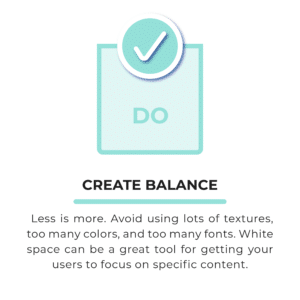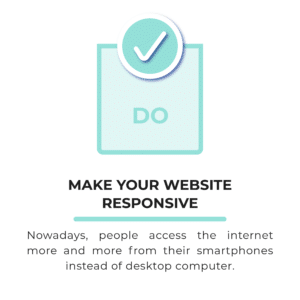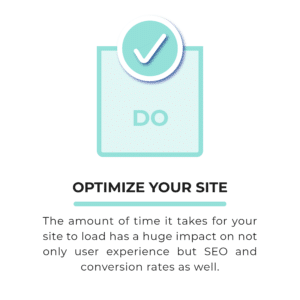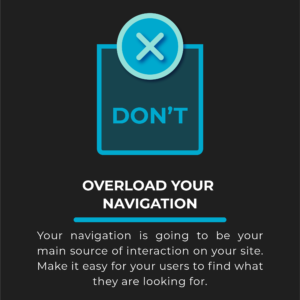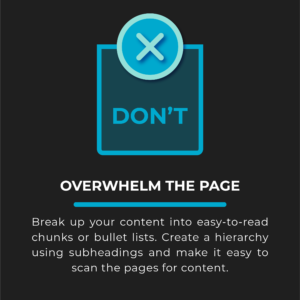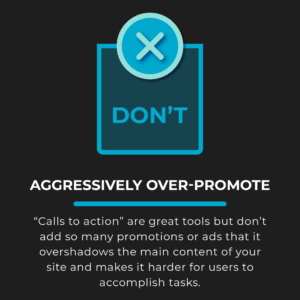
After 2020 and 2021, it shouldn’t be surprising that the world is still adjusting to the new norms. The internet is no different and we will have to adapt our digital presence to be more impactful as people spend more time online. Here are some of the trends coming in 2022.
Simplify
People are more tired and overwhelmed than ever. They no longer want to spend time looking at boring cookie cutter sites with content they don’t actually want or need. In 2022 we should all be aiming not to overwhelm users with too many choices and annoying pop-ups.
It’s time to take the Marie Kondo approach and cut back on complexities. Keep the navigation simple and make it easy for people to find what they are looking for. Keep text short and sweet and have very clear calls to action. The goal should be to have a lightweight website that encourages people to explore rather than putting everything up front and causing information overload.

Get Their Attention
A lot of times when we think simple, we think that means it’s going to be boring, but it doesn’t have to be! By utilizing some of these design techniques, you can engage people in a more focused and interactive way.
Micro-interactions
Micro-interactions, such as small animations that get triggered by hovering with your cursor, or by scrolling to a particular part of the page, is a way to give your web pages life and energy. Making them subtle, but noticeable, adds a level of detail that your visitors may not be able to articulate, but will help you stand out.
Motion Graphics
Creative motion graphics and animation can be a crucial tool in catching people’s attention, and it has proven to be one of the best elements for increasing user engagement. They are especially useful for illustrating complex concepts and processes in a simple, digestible way and can illustrate your message in a way words never could.
Dark Mode
Dark mode and/or dark themes are making a comeback as one of the top UI/UX trends in 2022. It not only looks very captivating and sophisticated, it brings more attention to the elements and gives a unique and modern image.
One of the reasons for its popularity in user experience is because dark backgrounds reduce eye strain and dryness, even potentially reducing blue light. On top of this, dark modes also reduce power usage for mobile phones with OLED screens.
Going forward you will see a toggle between light and dark mode which is the perfect investment if you want to bring more flexibility to the user experience.
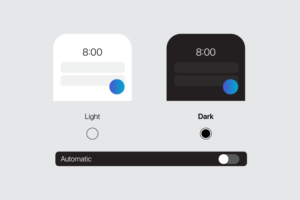
The Internet is for Everyone
People are looking for new and positive ways to engage online and being inclusive is going to become much more important. We need to approach the design process by considering a wide range of human factors. Not only should we focus on accessibility, we should also include other diversified factors such as race, gender, religion, sociocultural background, etc.
Successful websites in 2022 and beyond will create experiences that help people and generate positive thinking and goodwill. By incorporating themes of recovery and growth with clear messaging, along with the values found in diversified approaches, to our designs, we will allow everyone to enjoy a smooth and effortless user experience.
How We Can Help
If you are looking for ways to implement the latest trends on your website, please connect with us and we can get a conversation going. Part of our expertise is staying ahead of digital trends and creating valuable, results-driven website for our clients.
Connect with us today!
Sources:
https://logozila.com/blog/embrace-the-top-ui-design-trends-2022/
https://www.tacpoint.com/the-point/top-6-ux-ui-design-trend-2022
https://uiuxtrend.com/top-ui-ux-trends-2022-to-follow/
https://www.creativebloq.com/features/web-design-trends-2022
Photo by Junior Teixeira from Pexels

